<—– BACK to 1977 Hornet AMX Registry
History & Information
Welcome to the 1977 Hornet AMX Registry
A Little History
American Motors’ 1977 Hornet AMX launched the third generation of AMC’s top performance
model. It followed the 2-seat 1968-70 AMX sports car and the restyled, four passenger 1971-74
Javelin AMX. There was no AMX model sold in the United States for the 1975 or 1976 model
years.

Based on the successful AMC Hornet Hatchback, regarded by some as one of the best
automotive designs of the 1970s, the 1977 AMX was a limited production specialty model initially
conceived by Jim Wangers at Motortown Corporation of Detroit, Michigan. Motortown also
developed and built, or more accurately converted, the 1976 Mustang Cobra II and 1977 Pontiac
Can Am. They also created the Plymouth Volare Road Runner and Dodge Aspen R/T models,
many of which included a front spoiler and ground effects nearly identical to those of the Hornet
AMX.
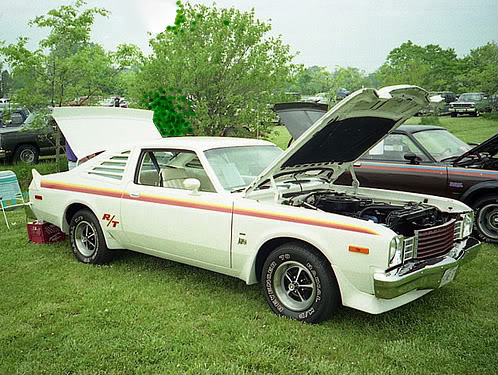
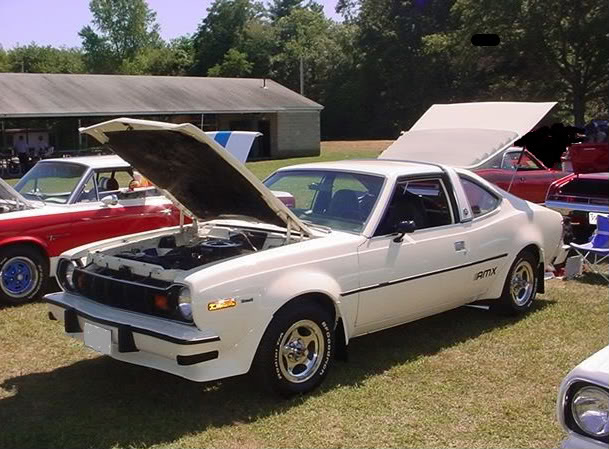
Dodge Aspen R/T and Hornet AMX ground effects comparison
According to Wangers, “Although the idea for the car originated at Motortown it was actually
built on the AMC assembly line in Kenosha, WI. Unfortunately, while the car itself was exciting
and a “pretty good” performer the apparent prostitution of the name AMX upset the owners of
earlier models and caused some critical backlash. Motortown Corp. did a lot of work for AMC,
as did Hurst Special Vehicles. I was fortunate enough to be with Hurst when they created the
SC/Rambler in 1969 and the Rebel Machine in 1970. After leaving Hurst I formed Motortown and
we continued to serve AMC with cars like the Hornet AMX and a really exciting package called
the SPacer which was a delightful mini-van. Unfortunately this one never made it in to
production.”
 Jim Wangers of Motortown Corp.
Jim Wangers of Motortown Corp.
He continues, “Motortown conceived the idea for the Hornet AMX and presented it to the
American Motors marketing folks, they can’t take full credit for the finished product. The “idea”
for the car to be built off the Hornet Fastback, came from Motortown but many of the final
styling changes were contributed by AMC Styling. I don’t feel comfortable representing myself as
the only creator of the car. While the original plan to build this effort off the Hornet were mine,
most of the contributions to the actual car were not mine. I do want you to understand that.
Motortown had a good styling group too and they worked very closely with the AMC guys.”
The Package
A 1977 Hornet AMX resulted from selecting a $799.00 option package which added the visual
appeal of lower fender flares, a front spoiler, brushed aluminum targa roof band and body color
rear window louvers. Also part of the package were bumpers painted the body color, not
urethane coated as some reported at the time. Much of the car’s exterior trim was blacked out
including the grille (except for a thin silver border), side window frames, dual side sport mirrors
and rear body tail light panel.


Unique outward identification consisted of large in-motion “AMX” graphics on both lower
quarter panels. Beginning around December 1976 a huge Trans-Am inspired flaming hornet decal
was available for the hood, with a smaller version for the rear hatch. Cars equipped with these
optional decals included a special bullseye emblem for the hood, replacing the standard hornet
badge common to other 1973-77 Hornets. Larger bullseyes were also found on either end of the
targa roof band on every Hornet AMX, an apparent reference to the model’s distant Javelin
heritage. Also unique were thick, solid black bodyside moldings which were standard equipment.


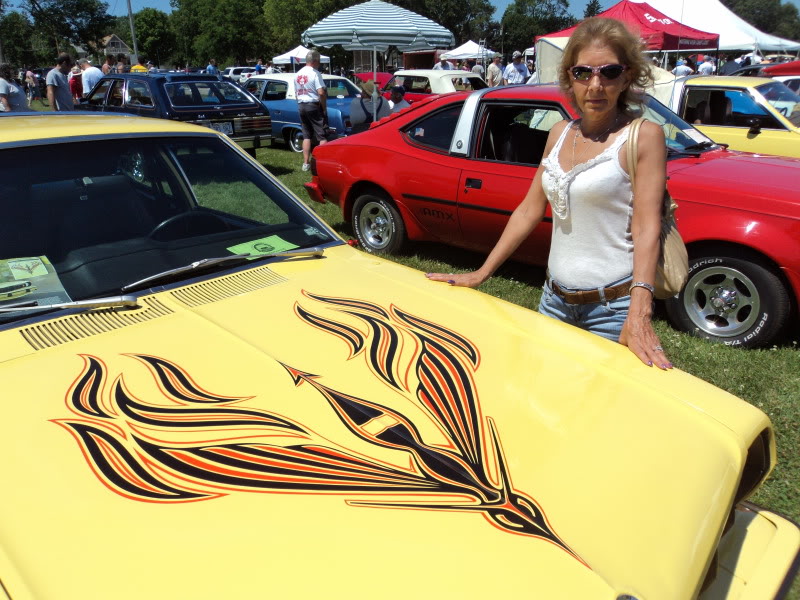
At the 2011 Kenosha show I met up with “Angel”, a former AMC employee whose job at the plant included installing the Hornet AMX hood decals. This task was assigned to her as she was petite and able to climb up on the cars without doing any damage. Angel reports that as a Hornet AMX came along which needed the decals, it would be pulled aside to a waiting area so she could outfit 3 or 4 cars at a time. If your Hornet AMX still has a factory original hood decal Angel is the one who put it there!
Hornet AMX exterior colors were limited to just four non-metallic choices. They were Firecracker
Red (easily the best seller), Sunshine Yellow, Alpine White, and Lime Green (the rarest color).


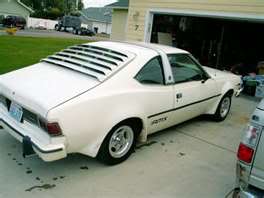

To prevent damage new Hornet AMX models were delivered to dealerships without the front
spoiler installed. Interesting is that this part, along with the fender flares, were molded in plastic
which approximated the outer body paint color. It must have been known that the flares ahead of
both rear wheels would be stripped in time by stones and road debris. Some white cars shared
ground effects molded in yellow. Note also that the Hornet AMX spoiler and fender flares were
never factory installed on another AMC model.


Highlighting the rear view was the aluminum body color backlight louver which is hinged at the top
for fairly easy window cleaning. Tamper proof, the louver is secured at the bottom by two small
pins which pass through nylon bushings. Small clips resembling tiny hood pins pass through
these posts and are secured to the hatch by a short cable on each side. The louver contacts the
hatch lid and rear glass with perimeter and dual vertical rubber insulators making for a rattle-free
installation.
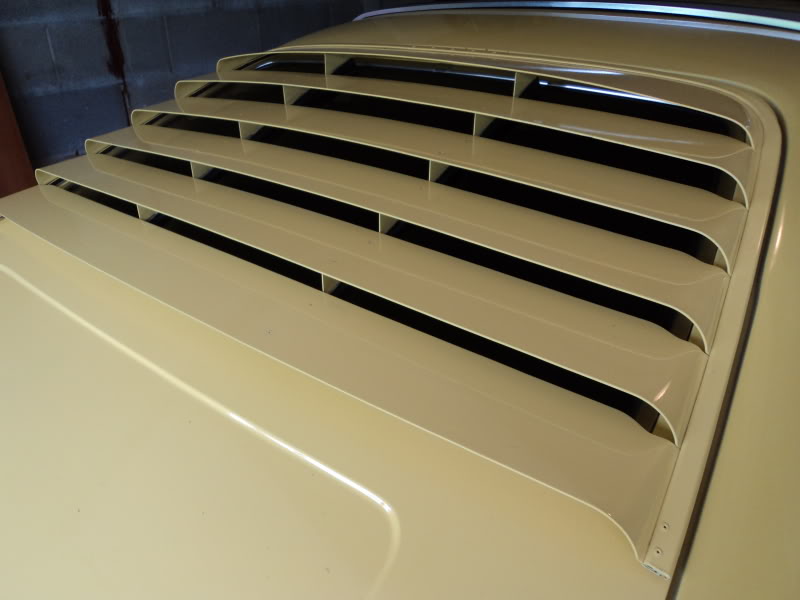
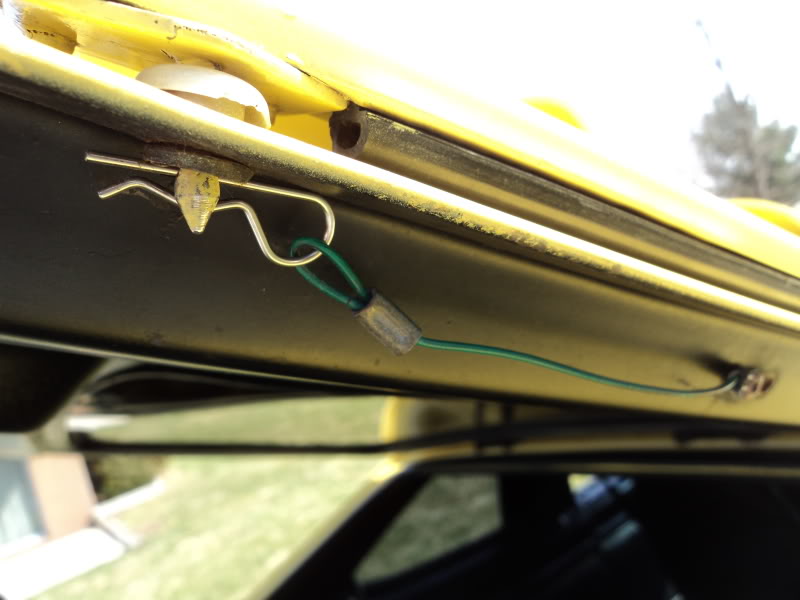
Wheel choices included optional 14×6″ polished aluminum 5-spokes which used the familiar
AMC “volcano” center cap. Standard were stamped steel wheels with a hard plastic cover
simulating the earlier bonded urethane road wheels. Early cars may have the actual bonded
wheels. Both steel wheels use a thin, rather fragile stainless beauty ring and volcano cap.
Goodyear Polysteel Radial tires were standard with white letters being optional.
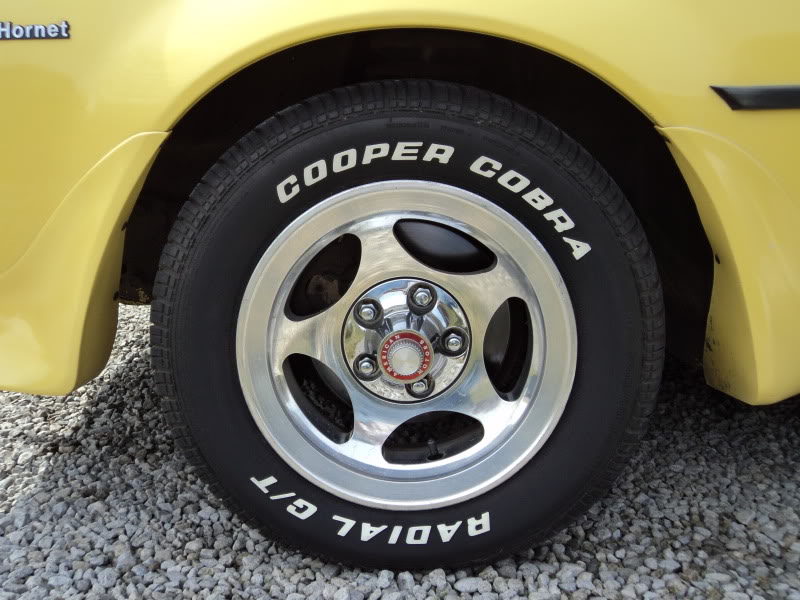

1977 AMX interior trimming was upgraded over most previous Hornets. Interior colors were
brown, black, or black with white vinyl seats. There was also a small run of 100 cars with blue Levi’s
denim cloth interiors. The instrument panel featured “engine turned” overlays and a matching “AMX”
emblem for the glove box door. A thick soft-feel sport steering wheel was standard. Cars with brown
or blue interiors used a black painted steering column with black steering wheel. Also standard was
a 6000 RPM tachometer (with 4500 RPM redline for six cylinder cars or 5000 RPM redline for V8’s).
Four smaller gauges were mounted in a pod just ahead of the floor shifter. These were a clock, amp,
temperature and oil pressure gauges. The temperature gauge located in the main instrument cluster
was blocked off to avoid duplication, although a few cars may have been built in error with dual
temperature gauges.

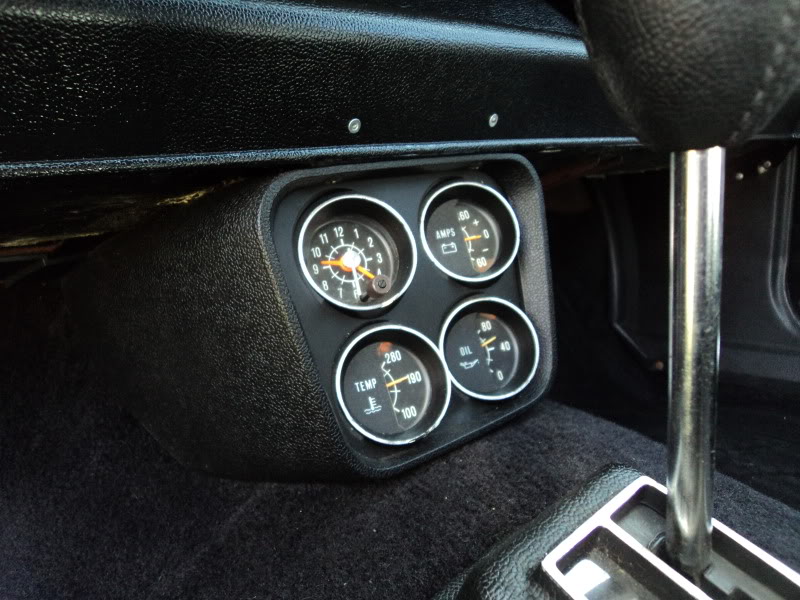
Interior side panels were upgraded with additional foam rubber padding, plus a narrow accent
band which simulates the engine turned effect of the dash. Grab handles were added to both
doors and a center console included an ash tray and locking storage compartment with carpet
inside. The rear seat was a bench type with a one-piece back which folded forward to greatly
increase the car’s load carrying capability. Behind this was a cargo floor which sloped to the rear
unless equipped with the optional hidden compartment which leveled the rear floor. This option
required a Space Saver spare tire. Cars with full size spares used a matching vinyl tire cover.
Back outside, where the targa band passed over the side glass, black decals were applied to the
outside of the windows. These concealed the black, foam rubber fillers behind the targa band
which still allowed normal operation of the flip-open quarter windows.

Mechanically the 1977 AMX was pure Hornet, not a bad thing, and represented AMC’s
“Economy Experts” tagline from a few years earlier. Standard was the thrifty 258 cid straight six
with Carter 2-bbl carburetor, although Canadian and high altitude cars received a 1-bbl carb. The
258 could be mated to a 4-speed stick or optional automatic with floor shift. The optional 304 cid
V8 with 2-bbl was only available with a Chrysler-built automatic. There was no exterior
identification or badging for either engine choice.
Levi’s Hornet AMX
A small run of 100 Hornet AMXs were assembled with AMC’s unique Levi’s interior. These
cars differed from other Hornet AMXs with their blue denim seats, matching denim trimmed door
panels and a special plate for the glove box door which reads “Limited Edition AMX 1 of 100”. The
cars also have “Levi’s” logo stickers for the front fenders. Since the Levi’s interior was a regular
option on AMC Gremlins, Hornet Hatchbacks, Jeeps and even the Pacer for 1977, it is not known
why only a preplanned number of Levi’s Hornet AMXs were built. These cars may have been
part of a corporate or regional promotion. So far only four of the 100 Levi’s Hornet AMXs have
surfaced, and all are Alpine White.







California Edition
One regional special edition is the C.E. or California Edition Hornet AMX. Built for the Southern
California AMC Dealers Association, this model can be identified by unique “C.E.” decals on both
front fenders. There is speculation that a special Audiovox stereo was also included. Although the
C.E. decals look like they could have been sourced from the local hardware store, they do appear in
the AMC parts catalog with part number 371 5286. Other California-bound 1977 AMC models were
available with the C.E. package as well.



Hornet AMX VIN Decoder
A American Motors Corporation
7 1977 Model Year
C Automatic floor shift M 4-speed floor shift
0 Hornet
3 2 door hatchback
7 Model Group (Pacer/Hornet/Matador)
E 232/1 bbl* A 258/1 bbl C 258/2 bbl H 304/2 bbl
123456 Serial number sample, Kenosha built cars
* Not officially offered with the AMX package, only two such cars known to exist.
The Hornet AMX Door Tag
Attached to the trailing edge of the left door is an aluminum tag which contains the model, body,
build sequence, paint and interior trim codes. For 1977 this tag is printed in black and has slotted
holes for the rosette (star) rivets. A Hornet AMX door tag is difficult to reproduce as it is
stamped using three distinctly different types of numbers. This tag, combined with the VIN, is the
DNA of a Hornet AMX, so a door tag which is lost because of door replacement or damaged from
careless disassembly devalues the car from a collector’s standpoint.
MODEL 7703-7 Decodes: 77 Year 03 Hornet 7 Standard Appointment Group
TRIM Black 711Q Black/White 71AQ Brown 716Q Blue (Levi’s) 713R
PAINT Firecracker Red 6P Sunshine Yellow 6V Alpine White G7 Lime Green 7P


Firecracker Red with Black Interior Lime Green with Brown Interior


Sunshine Yellow with Black Interior Alpine White with Black & White Interior
Pre-production
There is a report of a 1976 Hornet which may have been built as an AMX prototype. Painted
Lime Green and powered by a 304 with column-shifted automatic, this car was reportedly
purchased directly from AMC by an International Harvester employee working out of Rock
Island, Illinois. Apparently this car deteriorated and was eventually sold. It remains unaccounted
for today. With the amount of time required to develop automotive components, the possibility of
one or more AMC or Motortown-built 1976 AMX test cars is likely. Pre-production cars are
commonly used for promotional and photography purposes as well.
Period magazines and factory publications indicate that at least two early production AMX’s were
used for press duty, one red and one yellow. Both cars are conspicuously missing the rubber
guards from the lower corners of the front bumper. Also strange is a white “AMX” graphic
shown on the left side of the yellow car’s tail light panel. This detail must have been omitted at the
last minute as it’s even mentioned in early printings of the 1977 AMC prestige brochure. Stranger
yet is a dark colored AMX pictured in the 1977 Technical Service Manual (copyright 1976). This
car shows the hood decal and bumper corner guards, but the rear view shows unusual pinstriping
which outlines both sides of the tail light panel, but no “AMX” graphic. Apparently the rear
end treatment was being debated up to the very last minute!


This same publication shows a light colored car, again without the corner guards, but otherwise
outfitted like a production model except for the tires. Pre-production cars used Firestone 500’s, a
defective tire later recalled by the manufacturer, while production cars wore Goodyear Polysteel
Radials in size DR78-14.
Production
Actual production of the 1977 Hornet AMX package remains a mystery. I was informed by
American Motors Public Relations in 1980 that Hornet AMX production was not tallied.
Publications which report only a few hundred built are undoubtedly incorrect, however more than
one source cites a total production of 5,207 units, with 3,196 being six cylinder cars and 2,011
with V8 power. As these numbers are indirectly attributed to AMC, and seem reasonable, they are
the most reliable production figures currently available.
How many are left over 35 years later? That’s a good question, and one that is often asked. As
surviving Hornet AMX’s have long outlived the average useful life of a passenger car, I believe
that by now most owners will have joined up with a club for parts and technical assistance.
Although I have monitored the AMC hobby since 1995 less than 200 cars have been documented,
and many of those were parts donors which no longer exist. I’m sure that a few Hornet AMX’s are
still being daily driven in dry climates and have escaped being detected.




For these reasons, and keeping in mind that many of these cars have been driven by youthful
owners, I would place the number of surviving examples between 250 and 300.
Rumors & Oddities
In compiling the registry and speaking with owners some interesting tales have surfaced.
Non-standard paint colors and cars supposedly built without targa roof bands have been
reported. Naturally these deviations from stock could be explained by an owner’s personal tastes.
In years past it was not uncommon for cars to be ordered in a non-standard color or with
equipment deleted or even added from a different car line. However without documentation these
differences can only be attributed to a previous owner customizing their car after taking delivery.
Also reported was a Canadian car which was delivered from the factory with bumpers painted
over chrome. This could be the result of AMC workers keeping the assembly line running despite
running out of unplated bumper rails, or possibly a car that was damaged in transit.
Performance Activities
As AMC’s “halo” performance car for 1977, some Hornet AMX’s were extensively modified for
automotive competition. This includes cars built for IMSA road racing as well as Pro Stock 1/4
mile drag racing.
Wally Booth’s factory-backed Pro Stock car (shown below) started out as an earlier Hornet Hatchback, but had fender flares and a targa roof band added for the 1977 racing season to make it appear to be a new Hornet AMX.





Buyer Guidelines
With over three decades since production, Hornet AMX models are in relatively short supply
today. If you are lucky enough to locate one for sale perhaps the most critical problem area to
watch for is body rust. As with most Hornets front fender top rust-through is common. Rocker
panels can be another problem area, especially the inner portion underneath the car. Other areas to
check are the door frames, lower corners of the doors and rear wheel lips.
The Hornet AMX has no serious mechanical concerns and requires no unusual maintenance.
AMC six cylinder and V8 engines are excellent designs good for service far in excess of 100,000
miles when cared for.

If your potential purchase has damaged or missing AMX exclusive parts or trim, be aware that
these obsolete parts can be difficult to locate and fairly expensive. Although all of the decals and
some other small parts have been reproduced, buying the most complete car that you can find is
highly recommended.
As a desirable collector car, expect to pay well over the original sticker price for a 1977 Hornet
AMX in very good to excellent condition. Presentable driver quality cars can occasionally be found
for less than $3,000.
1977 Hornet AMX Vehicle Locator
And Finally
If you own or know of an original 1977 Hornet AMX which doesn’t appear in the registry please
contact me! For a car to be included in the registry a complete VIN is required in order to
prevent duplicate listings of the same car by multiple owners. Complete VIN’s, owner names and
locations will not be published or shared.


